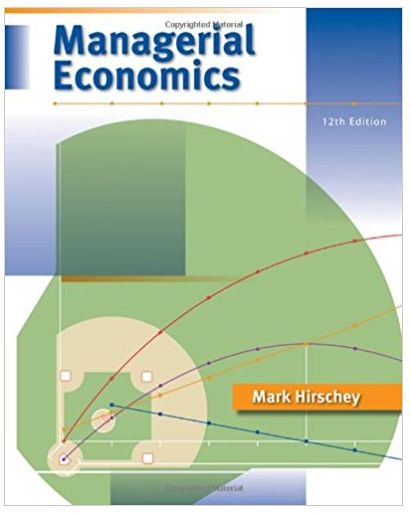A. Describe the overall explanatory power of this regression model, as well as the relative importance of
Question:
B. Based on the importance of the binary or dummy variable that indicates superstore competition, do superstores pose a serious threat to Columbia’s profitability?
C. What factors might Columbia consider in developing an effective competitive strategy to combat the superstore influence?
Demonstrating the tools and techniques of market structure analysis is made difficult by the fact that firm competitive strategy is largely based upon proprietary data. Firms jealously guard price, market share and profit information for individual markets. Nobody should expect Target, for example, to disclose profit and loss statements for various regional markets or on a store-by-store basis. Competitors like Wal-Mart would love to have such information available; it would provide a ready guide for their own profitable market entry and store expansion decisions.
To see the process that might be undertaken to develop a better understanding of product demand conditions, consider the hypothetical example of Columbia Drugstores, Inc., based in Seattle, Washington. Assume Columbia operates a chain of 30 drugstores in the Pacific Northwest. During recent years, the company has become increasingly concerned with the long-run implications of competition from a new type of competitor, the so-called superstore.
To measure the effects of superstore competition on current profitability, Columbia asked management consultant Peter Parker to conduct a statistical analysis of the company’s profitability in its various markets. To net out size-related influences, profitability was measured by Columbia’s gross profit margin, or earnings before interest and taxes divided by sales. Columbia provided proprietary company profit, advertising, and sales data covering the last year for all 30 outlets, along with public trade association and Census Bureau data concerning the number and relative size distribution of competitors in each market, among other market characteristics.
As a first step in the study, Parker decided to conduct a regression-based analysis of the various factors thought to affect Columbia’s profitability. The first is the relative size of leading competitors in the relevant market, measured at the Standard Metropolitan Statistical Area (SMSA) level. Given the pricing, marketing, and average-cost advantages that accompany large relative size, Columbia’s market share, MS, in each area is expected to have a positive effect on profitability. The market concentration ratio, CR, measured as the combined market share of the four largest competitors in any given market, is expected to have a negative effect on Columbia’s profitability given the stiff competition from large, well-financed rivals. Of course, the expected negative effect of high concentration on Columbia profitability contrasts with the positive influence of high concentration on industry profits that is sometimes observed.
Both capital intensity, K/S, measured by the ratio of the book value of assets to sales, and advertising intensity, A/S, measured by the advertising-to-sales ratio, are expected to exert positive influences on profitability. Given that profitability is measured by Columbia’s gross profit margin, the coefficient on capital intensity measured Columbia’s return on tangible investment. Similarly, the coefficient on the advertising variable measures the profit effects of advertising. Growth, GR, measured by the geometric mean rate of change in total disposable income in each market, is expected to have a positive influence on Columbia’s profitability, because some disequilibrium in industry demand and supply conditions is often observed in rapidly growing areas. Columbia’s proprietary information is shown in Table 13.3
Finally, to gauge the profit implications of superstore competition, Parker used a “dummy” (or binary) variable where S = 1 in each market in which Columbia faced superstore competition and S = 0 otherwise. The coefficient on this variable measures the average profit rate effect of superstore competition. Given the vigorous nature of superstore price competition, Parker expects the superstore coefficient to be both negative and statistically significant, indicating a profit-limiting influence. The Columbia profit-margin data and related information used in Parker’s statistical analysis are given in the preceding table. Regression model estimates for the determinants of Columbia’s profitability are shown in Table 13.4.
Distribution
The word "distribution" has several meanings in the financial world, most of them pertaining to the payment of assets from a fund, account, or individual security to an investor or beneficiary. Retirement account distributions are among the most...
Fantastic news! We've Found the answer you've been seeking!
Step by Step Answer:
Related Book For 

Question Posted:





